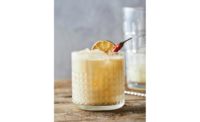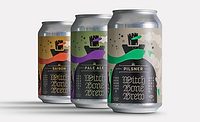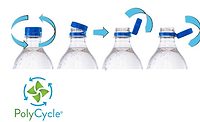Packaging Materials
Sustainability, innovation drive stretch and shrink labels market
Beverage brands seize opportunity to boost features, recyclability of labels

Although supply chains for various aspects of the beverage industry have been disrupted because of COVID-19, the market for stretch and shrink labels has remained steady. Expanding capabilities, advancements in design, technology and recyclability are likely contributing the use of such labels, experts notes.
The “Shrink and Stretch Sleeve Labels Market: Growth, Trends and Forecasts (2020-2025)” report by Hyderabad, India-based Mordor Intelligence states that the shrink and stretch sleeve labels market, valued at $10.37 billion in 2019, is expected to grow at a compound annual growth rate (CAGR) of 6.52 percent through 2025, resulting a projected market value of $15.55 billion at the end of the forecast period.
Kimberly Flynn, marketing manager for Hammer Packaging, Rochester, N.Y., says one advantage of shrink sleeves is that they provide a 360-degree canvas for branding art.
“This gives marketing teams the opportunity to utilize the full container to grab consumers’ attention,” she says.
On the other hand, Mordor Intelligence’s report states that stretch sleeve labeling is ready-to-use and can easily conform to containers of different shapes, is eco-friendly and cost-effective, but its application rate is much slower than shrink-sleeve labeling at less than 150 containers a minute.
As such, shrink-sleeve labels aligns best with higher throughput rates of as many as 800 containers a minute, it adds.
In addition, with tight labeling regulations for food and pharmaceutical products Mordor Intelligence states that having extra space is expected to heighten the importance of full-body shrink sleeves as brands utilize the container’s footprint to display more information.
Environmental motivation for change
As is the case with many aspects of the beverage manufacturing, sustainability is key. Hammer Packaging’s Flynn notes that demand for more sustainable packaging is motivating changes throughout the industry.
“Sustainable packaging is more than just a trend, it’s a packaging movement,” Flynn says. “In the shrink sleeve market, cost-neutral sustainable solutions are making an impact in these label choices, along with functionality.”
Michael Johnston, tunnel testing and development technician for PDC International Corp., Norwalk Conn., says he has heard buzz surrounding polylactic acid (PLA), a corn-based plastic that is biodegradable under the right circumstances.
“The recyclability of label material continues to be focused upon,” he says. “The shrink-sleeve industry is constantly evolving, and improving with new scientific developments. In the past few years, we have seen an uptick in consumers’ interest toward the recyclability of products.”
In addition, technology and modern design also is motivating label innovation. Hammer Packaging’s Flynn highlights that the company recently developed a mechanism for inserting an electronic article surveillance (EAS) security tag onto the inside of its shrink sleeves for store theft protection.
“We’re also seeing customers utilize more customization options, such as matte coatings, soft touch, raised tactile coatings and other options for making their packages stand out on the shelf,” Flynn says.
PDC’s Johnston says his team also has seen full-length perforation become more popular in the past year.
“This [perforation] provides the consumer with the ability to easily remove the shrink sleeve from the bottle to begin the recycling process,” he says. “This has become a big selling point; we expect to see more and more manufacturers moving in this direction.”
With so many options and features to consider, Johnston notes it is imperative for a brand to fully understand the shrink curve of the film they plan to use.
“The shrink curve depicts a film’s characteristics, such as the vertical, and horizontal shrink percentage the film possesses, as well as at what temperature it will achieve said results,” he says. “Knowing the percentage of shrink needed to achieve a great looking end product will ensure you have the correct film for production.”
Johnston notes that PDC also has seen shrink labels growing in the microbrewery industry, as the use of digitally printed film has advantages for small runs of products and allows companies to change the look of the film often.
“This is appealing if the producer has a wide variety of flavors they are bringing to market,” he adds.
‘Positive’ labeling
Mordor Intelligence reports that due to COVID-19, the packaging supply chain and labeling industry has been disrupted, impacting demand and supply of products. Despite this, governments across the globe have deemed food-related businesses essential, which could likely mean the demand for shrink and stretch sleeve labels to remain steady for the forecast period of 2020 to 2025.
In addition, experts note that sustainability in packaging and labeling also will continue to drive the market.
“Due to the public’s desire for more environmentally friendly films, we anticipate seeing the manufacturer continue to rise to the occasion and provide the consumer with what they desire,” PDC’s Johnston says.
Hammer Packaging’s Flynn agrees that sustainable solutions will play a growing role in the future of shrink sleeve labels.
“Our customers are developing robust and measurable sustainability goals, and as packaging providers, we need to do everything we can to help them achieve those goals as a trusted supplier,” she says.
Looking for a reprint of this article?
From high-res PDFs to custom plaques, order your copy today!







